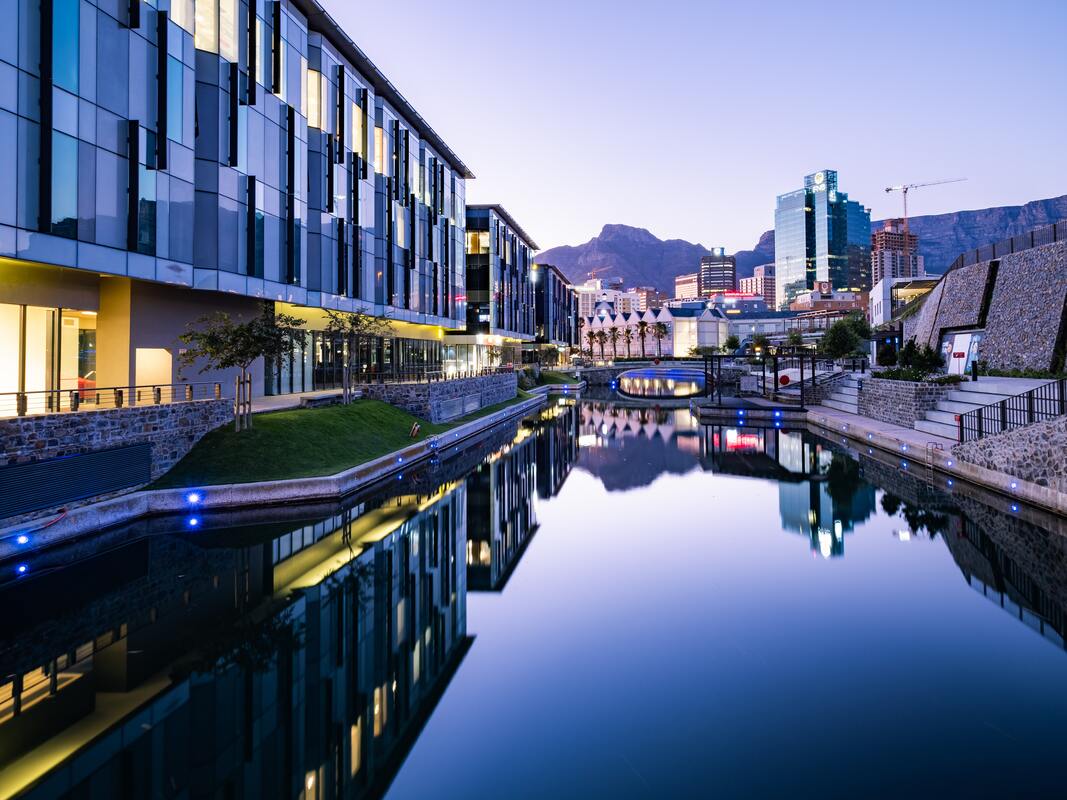|
In April 2018, the City of Cape Town, South Africa came within days of running out of water. Three million people faced the prospect of faucets running dry, civil unrest, and an unprecedented water-resource crisis that threatened to change the face of the city forever. Two years on, we consider how Cape Town avoided “Day Zero” and how the solution to preventing such a disaster might come from the ocean.
The once-in-a-century drought of 2015-2018 has had unprecedented consequences on the residents of Cape Town. Following a collective drive to halve water consumption within two years, debilitating water restrictions, and a change in how we treat this precious resource, the city at the end of Africa managed to stave off the drought. Images of dams at 10% capacity kept the world focused on the situation and a series of innovative, if desperate, measures were put in place to manage the dwindling water supply. The government drilled into local underground aquifers, tapping into million-year-old reserves, per person water rations of 50 liters (13 gallons) per day were instituted and non-essential taps were locked shut. Whilst these measures fought off what seemed an inevitable disaster, authorities are now looking into alternative solutions should the rain stop falling again. Many have turned to the oceans for their salvation. Part of the emergency measures put in place included the speedy installation of three small but temporary desalination plants along Cape Town’s coastline. This is proving a quick fix, however as the prohibitively expensive process of turning seawater into potable H2O is not a sustainable one. A radical idea, floated in mid-2018 and initially scoffed at as fantastical, is now being seriously considered. Towing an iceberg from Antarctic Seas (1400 miles away) to within 15 miles of the African shoreline could help to solve the city’s drought dilemma. Marine engineers have proposed that “capturing” a 1600-foot-wide, 800-foot-high, flat-topped iceberg off of Antarctica and towing it back to warmer climes may be the answer. Wrapped in a massive insulating skirt to prevent melt during the 3-month journey, the ‘berg would then be “mined” for fresh water. Another proposal looks at taking advantage of a massive freshwater reservoir at the bottom of the ocean off the southern tip of the African continent. The Bredasdorp Basin, an 18 000-square-mile region of ocean floor 105 miles from Cape Town is purported to hold massive amounts of fresh water, separated from the salty seawater by layers of clay, locked beneath the tides. Getting to it, however, may be a challenge. Researchers must first determine if the supply is a leftover reserve that was deposited by a freshwater glacier during the ice ages – a time when sea levels were hundreds of feet lower than they are today – or if the water is collected from land-based runoff. If the latter, this could prove an exciting renewable resource. One thing is clear – whatever the eventual solution, if we turn to the seas to sate our thirst for fresh water, they need to be clean. Already reports of sewage emanating from passing ships and the city itself of tainting desalination plants are emerging. Whilst authorities were busy seeking answers to the drought, they neglected the impact that we’re having on the surrounding waters. Facing this new problem, plans are being installed to filter and manage sewage runoff from the land. The ships, however, are not subject to, nor do they adhere to, the lax regulations in place governing what they leave behind as they round the Cape of Good Hope. In order to solve the bigger problems, we must first get through the smaller ones. Technologies have now been made available that allow ships to retain their waste on board in a safe, efficient manner. From the byproducts of their mechanical operations to the human-generated waste collected onboard, these technologies are allowing vessels to make port and dispose of their unwanted excess in an eco-friendly manner - without ever poisoning the oceans. It is up to us to make sure that we use them. References: 1. https://qz.com/africa/1321034/cape-town-day-zero-expert-proposes-towing-iceberg-from-antarctica/ 2. https://www.theverge.com/2018/2/15/17012678/cape-town-drought-water-solution
0 Comments
Now-a-day’s sustainability has become a critical factor in managing goods and services. For international shipping, sustainability is also a long term but a slow process. Holistic efforts are needed in the perspective of a ship instead to take fragmented efforts to achieve sustainable operation shipping. However, shipping is port-to-port service which makes the key issue in strategic planning. But communities around the world are now more concerned about climate change and sustainable development in following the sustainable development goals in the United Nations agenda 2030. Shipping became popular as a result of oil transport during the 20th century which led large oil discharge into the sea as the effects became visible by the time and need of safer and less destructive shipping was aimed. This led to the formation of the International Maritime Organization for more reliable navigation and to prevent accidental oil spilling in the sea. International Maritime Organization (IMO) that deals with international shipping integrated its efforts with sustainable development goals (SDG) for strategic goals of the organization of 2018-2023. It was agreed that by January 2020, all the ship-owners would comply with IMO global sulphur reduction strategy, fuel containing 0.5% of sulphur content while in emission control areas the fuel with 0.1% of sulphur content. IMOs strategic efforts have been regulated goal-based since the 2000s and comprehensive plans have been made. Though current shipping practices are also facing challenges to achieve sustainable development goals.
|
NGDExceptional marine engineering and 3D scanning. Archives
May 2020
Categories |



 RSS Feed
RSS Feed